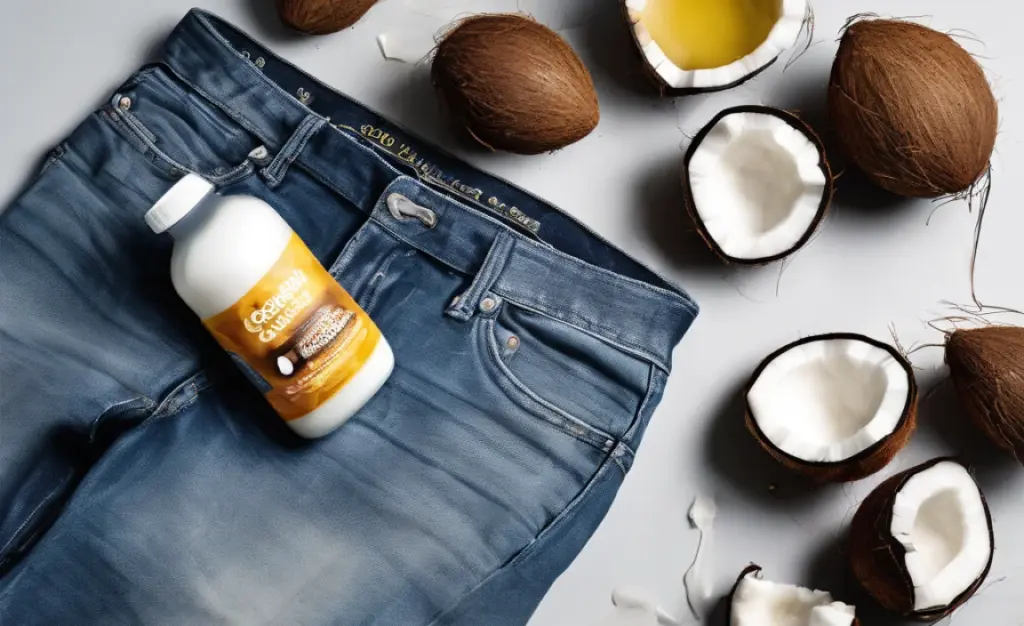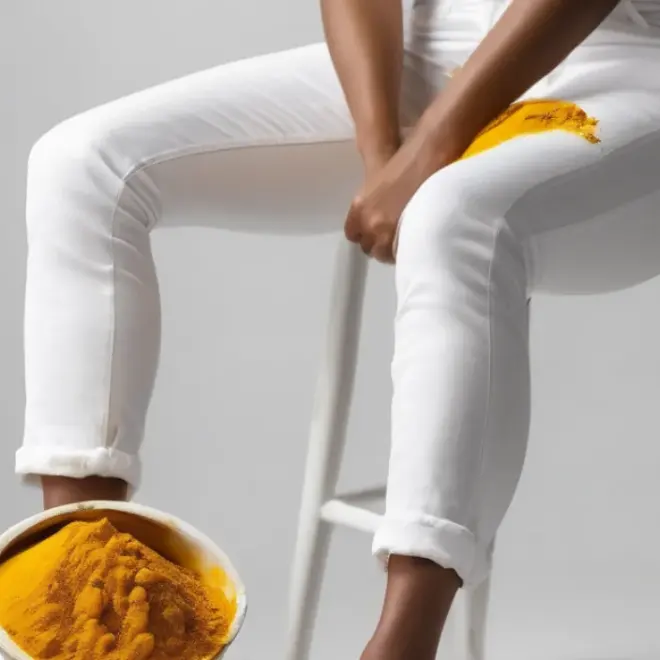Effortlessly remove coconut oil stains from your jeans with these simple, effective methods. Learn how to treat the spot before washing to ensure a clean, fresh look without damaging the fabric. Follow these easy steps for stain-free denim.
It happens to the best of us. You’re enjoying a healthy snack, doing some DIY beauty, or just going about your day, and suddenly, a greasy spot of coconut oil lands right on your favorite jeans. Don’t panic! Coconut oil, while notoriously stubborn on fabric, can be removed with the right approach. This guide will walk you through simple, effective methods to get your denim looking as good as new, without any harsh chemicals or complicated steps.
We’ll explore the science behind tackling oil stains, the best tools to have on hand, and a step-by-step process that anyone can follow. By the end, you’ll feel confident in your ability to handle these common laundry mishaps. Let’s get your jeans back to their best!
Understanding Coconut Oil Stains on Denim
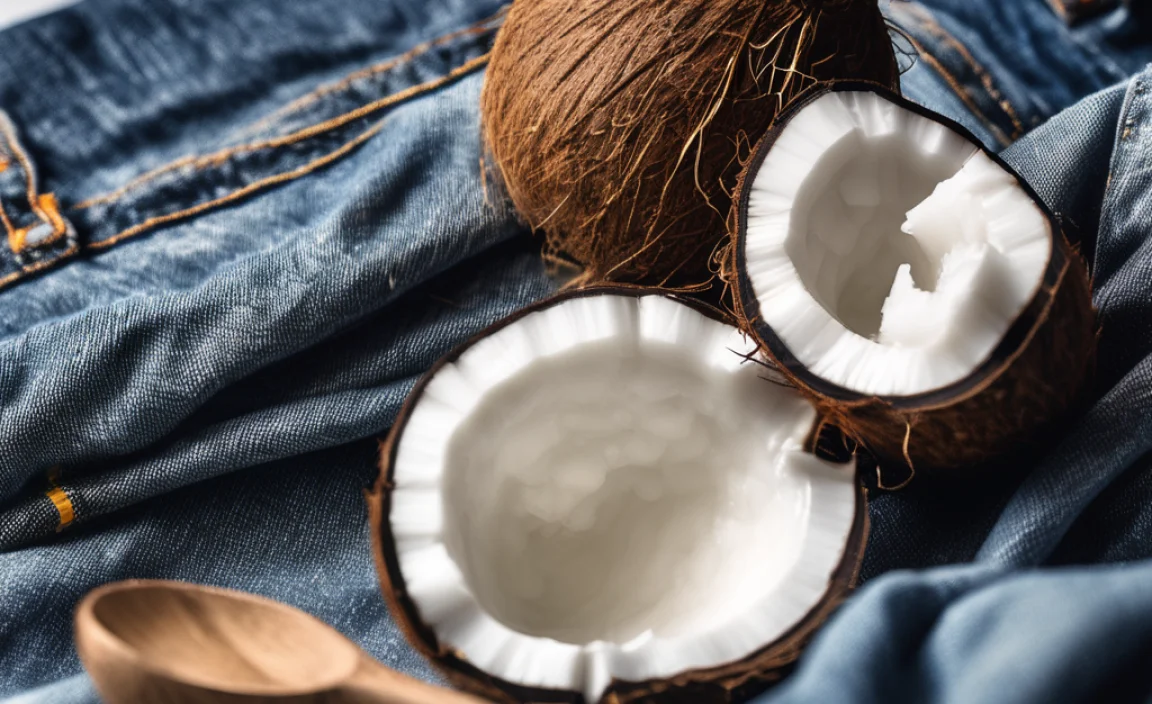
Coconut oil is a vegetable-based oil, which means it’s an organic stain. Unlike water-based stains, oil penetrates fabric fibers easily and can set in if not treated quickly and correctly. The challenge with coconut oil is its solid state at room temperature (below about 76°F or 24°C), which can make it seem easier to handle, but once it melts, it spreads and soaks into the denim’s weave.
The key to removing any oil-based stain lies in breaking down the oil’s structure so it can be lifted from the fabric. This usually involves a degreasing agent. For denim, which is a sturdy cotton twill, we have a bit of an advantage as it can typically withstand more robust treatment than delicate fabrics. However, it’s always wise to start with gentler methods and escalate if needed to preserve the color and integrity of your jeans.
What You’ll Need: Your Stain-Fighting Arsenal

Before you dive into the stain removal process, gather these common household items. Having them ready ensures you can act fast, which is crucial for successful stain removal.
- Paper towels or clean cloths
- Cornstarch, baking soda, or talcum powder
- Liquid laundry detergent (preferably one designed for grease-fighting)
- A soft brush (like an old toothbrush)
- A basin or sink
- Optional: Dish soap (known for its degreasing properties)
- Optional: White vinegar
- Optional: Oxygen bleach (color-safe bleach)
Step-by-Step Guide: Removing Coconut Oil from Jeans
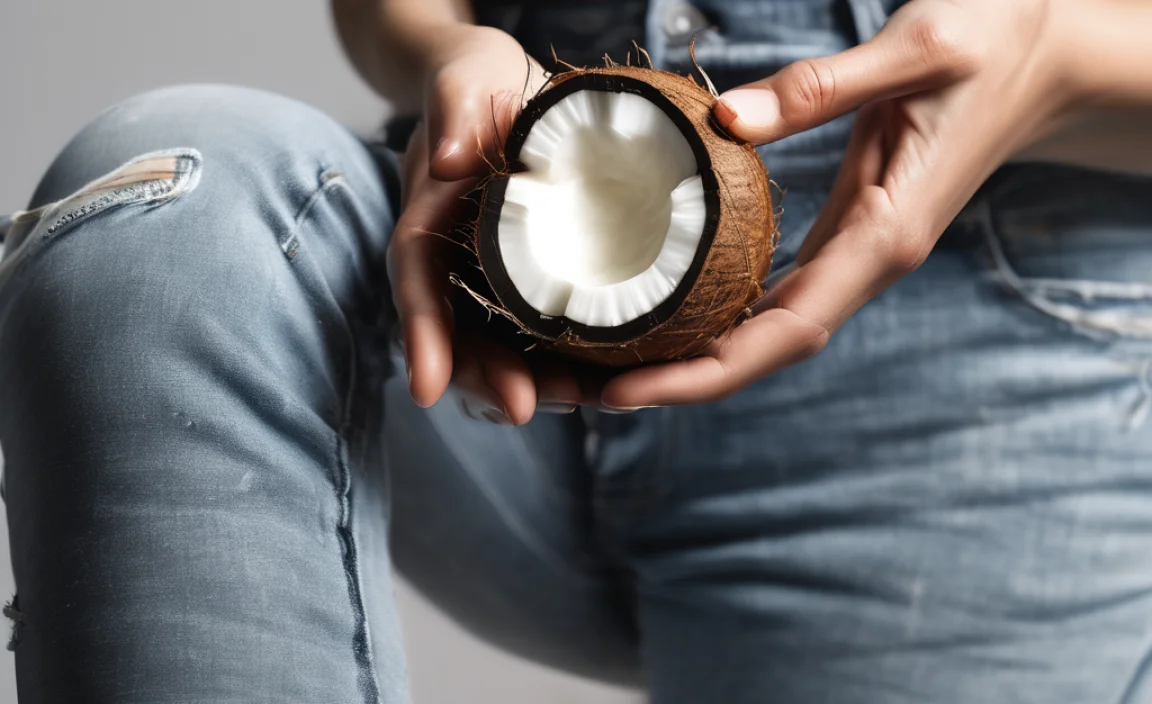
Here’s your straightforward, actionable plan to banish coconut oil stains from your jeans. We’ll go from initial treatment to the final wash.
Step 1: Act Quickly – Blotting the Excess
The moment you notice the stain, grab a paper towel or a clean, dry cloth. Gently blot the greasy area. The goal here is to absorb as much of the surface oil as possible. Avoid rubbing, as this can spread the stain and push it deeper into the fabric fibers.
Think of it like mopping up a spill on your kitchen counter – you want to lift the liquid, not smear it around. Be patient and use a fresh part of the cloth or a new paper towel as it becomes saturated.
Step 2: Absorb the Grease – The Powder Method
This is where your absorbent powder comes into play. Generously sprinkle cornstarch, baking soda, or talcum powder directly onto the oil stain. These powders are excellent at drawing out grease. Let the powder sit on the stain for at least 15-30 minutes. For tougher or older stains, you can leave it for several hours or even overnight.
The powder will clump as it absorbs the oil. Once it’s done its job, gently brush off the powder. You should see that the stain appears lighter and less greasy where the powder was applied. Repeat this powder application if the stain is still very prominent.
Fact Check: Baking soda and cornstarch are natural absorbents that work by wicking oily substances away from fabric. Their fine particles create a large surface area to draw out lipids, making them effective pre-treatment agents for grease stains. For more on stain removal, check out resources from university extension offices, such as those on fabric care and stain removal.
Step 3: Pre-Treat with Degreaser
Now it’s time to tackle the lingering oil that the powder couldn’t fully remove. Apply a small amount of liquid laundry detergent directly to the stained area. If you don’t have a heavy-duty laundry detergent, a small drop of dish soap (like Dawn, which is famous for its grease-cutting power) can also work wonders. Gently work the detergent into the stain with your fingers or a soft brush. Allow it to sit for about 5-10 minutes to break down the oil.
For tougher stains, you might consider a paste made from baking soda and water, applied to the stain after you’ve brushed off the initial powder. Let this paste sit for about 15 minutes before proceeding.
Step 4: Rinse and Assess
Gently rinse the pre-treated area with cool or lukewarm water. This will help lift the loosened oil and detergent. Before you put your jeans in the washing machine, take a good look at the stain. Is it still visible? If you can still see a definite oily mark, repeat Step 2 and Step 3 before moving on to washing.
It’s crucial to assess the stain at this stage. Putting oil-stained clothes directly into a hot dryer can permanently set the stain, making it nearly impossible to remove. Patience truly pays off here.
Step 5: Wash as Usual (with a Twist)
Now that the stain has been pre-treated, it’s time to wash your jeans. Wash them in the washing machine using your regular laundry detergent, but opt for the hottest water temperature that is safe for your denim fabric. Check the care label on your jeans for recommended washing temperatures. For most cotton denim, hot water is ideal for lifting grease.
Pro Tip: Consider adding a stain-treating booster to your wash cycle, such as an oxygen bleach (like OxiClean) if your jeans are colored, or a standard chlorine bleach alternative if they are white. Always check your jeans’ care label first to ensure bleach is safe.
Step 6: Air Dry and Inspect
This is another critical step. After the wash cycle is complete, resist the urge to put your jeans in the dryer. Instead, hang them to air dry. Once dry, inspect the stained area in good natural light. If the stain is completely gone, congratulations! You can proceed to dry them in the dryer if you wish, or continue air drying.
If, however, you notice any faint traces of the stain, do NOT put them in the dryer. The heat will set the stain. If the stain persists, repeat the pre-treatment steps (Steps 2-4) and wash again. It might take a couple of attempts for very stubborn stains.
Natural Alternatives and Tips for Stubborn Stains
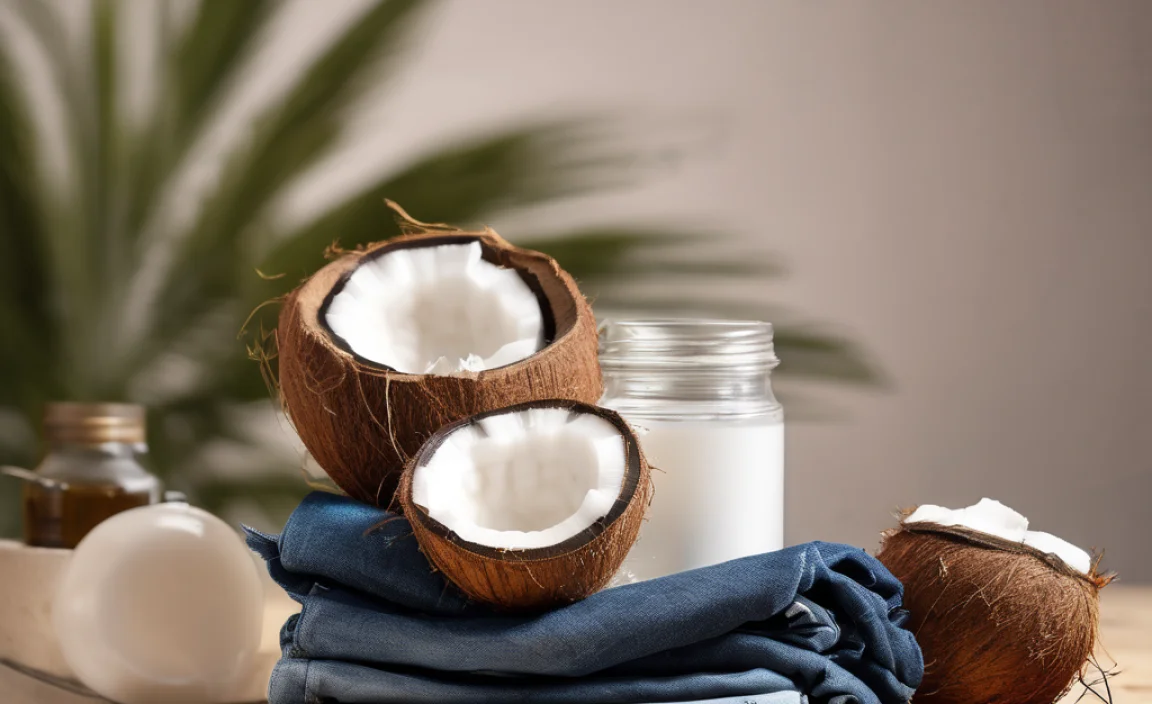
Sometimes, the standard approach might need a little extra boost. Here are some natural and effective alternatives, along with tips for tackling those really persistent marks.
Lemon Juice and Sunlight
For lighter colored jeans, the natural bleaching power of lemon juice combined with sunlight can be effective. After pre-treating with powder and detergent, apply fresh lemon juice to the stain and lay the jeans flat in direct sunlight. The sun acts as a natural bleach booster. Rinse and wash as usual. Be cautious with dark-wash jeans, as lemon juice can cause fading.
White Vinegar Soak
White vinegar is a fantastic natural degreaser and deodorizer. For set-in stains, you can try soaking the affected area in a solution of one part white vinegar to two parts water for about 30 minutes. Agitate the fabric gently during the soak. After soaking, rinse thoroughly and proceed with pre-treatment and washing.
Dish Soap is Your Friend
As mentioned, dish soap is specifically formulated to cut through grease. If your laundry detergent isn’t cutting it, a stronger dish soap applied directly to the stain and allowed to sit for an hour or more before washing can be very effective. Be sure to rinse it out thoroughly before machine washing to avoid excessive suds.
Dealing with Old, Set-In Stains
Old stains are tougher because the oil has had more time to bond with the fabric fibers. For these, you’ll likely need to be more patient and may need to repeat the pre-treatment steps multiple times. Consider using a commercial stain remover specifically designed for grease or oil, following the product instructions carefully. Always test stain removers on an inconspicuous area first to ensure they don’t damage the dye.
Preventative Measures and Best Practices

While we’ve covered removal, a little foresight can save you a lot of trouble. Here are some tips to minimize the risk of coconut oil stains on your jeans:
- Be Mindful During Application: When using coconut oil for cooking, beauty treatments, or any other purpose, try to do so in an area where spills are less likely to affect clothing, or wear an apron.
- Immediate Cleanup: If a spill does occur, address it immediately. The longer oil sits on fabric, the harder it is to remove.
- Proper Storage: If you use coconut oil in containers, ensure lids are tightly closed and store them in places where they won’t accidentally tip over.
- Read Garment Care Labels: Always refer to the care label on your jeans. This provides essential information on water temperature, bleach compatibility, and drying instructions, helping you choose the safest and most effective cleaning methods. Reputable sources like the Federal Trade Commission (FTC) offer guidance on understanding garment care labels.
Troubleshooting Common Issues
Even with careful attention, you might encounter some common snags. Here’s how to address them:
The Stain is Still Visible After Washing and Drying
This is the most frustrating scenario. If you accidentally dried your jeans with the stain still present, the oil has likely bonded to the fibers. Your best bet is to re-wash the garment, but this time, use a stronger degreaser. Try applying a heavy-duty degreasing laundry detergent or dish soap directly to the stain, let it sit for several hours, scrub gently with a soft brush, and then wash again in hot water. You might need to repeat this process more than once. Avoid drying until the stain is completely gone.
The Denim Color Fades After Treatment
Some strong cleaning agents, especially if used too aggressively or left on too long, can cause fading. If you notice fading, switch to gentler methods. Using a color-safe bleach alternative or sticking solely to laundry detergent rather than dish soap might help. Always test any new cleaner on an inside seam or hidden area first. For future washes, using a detergent designed for color protection can help maintain vibrancy.
The Fabric Feels Stiff or Damaged
Overly aggressive scrubbing or using very harsh chemicals can sometimes damage the fabric fibers, making them feel stiff. If this happens, try soaking the jeans in a fabric softener solution or adding ½ cup of white vinegar to the rinse cycle of your next wash. This can help soften the fibers. Always use a soft brush for stain treatment and avoid excessive force.
Frequently Asked Questions About Coconut Oil Stains
Q1: How quickly should I treat a coconut oil stain?
Treat it as soon as possible. Fresh stains are significantly easier to remove than those that have set in.
Q2: Can I use hydrogen peroxide to remove coconut oil?
Hydrogen peroxide can be used for stain removal, but it’s a mild bleaching agent. It’s generally safer for white or very light-colored fabrics. Always test it on an inconspicuous area first, as it can lighten colors.
Q3: What’s the difference between treating fresh vs. old coconut oil stains?
Fresh stains are primarily on the surface and haven’t bonded deeply. Old stains have had time to penetrate and “set” into the fabric fibers, making them much harder to lift and often requiring multiple treatments.
Q4: My jeans are dry clean only. Can I still remove coconut oil?
If your jeans are dry-clean only, it’s best to take them to a professional dry cleaner. Inform them about the coconut oil stain and its location. They have specialized solvents that can safely remove oil without damaging the fabric.
Q5: Should I use hot or cold water to wash coconut oil stains?
Start with cool or lukewarm water for rinsing and pre-treatment. However, for the main wash cycle after pre-treatment, hot water is generally best for breaking down and lifting oil, provided the fabric care label permits it.
Q6: Can I use an iron to remove the stain?
No, I would strongly advise against using an iron. Applying heat directly with an iron will likely set the oil stain permanently into your jeans, making it impossible to remove.
Conclusion
Dealing with a coconut oil stain on your favorite pair of jeans doesn’t have to be a denim disaster. By acting fast, using absorbent powders to draw out the bulk of the grease, and then pre-treating with a good degreaser like laundry detergent or dish soap, you can effectively lift even stubborn oil marks. Remember, patience is key – repeated treatments and avoiding the dryer until the stain is completely gone are crucial steps. With these simple, fact-based methods, your jeans will be back to their stain-free best, ready for whatever adventures come next.


